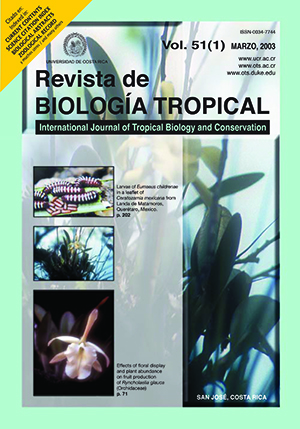Abstract
Currently biological invasions are considered one of the world’s most serious conservation problems. Ligustrum lucidum is the most abundant exotic tree in secondary forest patches of montane forests of NW Argentina. We studied the determinants of success of the early stages of its life cycle in distinct habitat types, with the hope of identifying vulnerabilities that could be exploited to control the invasion. Seed arrival, germination, seedling recruitment and survival, and sapling growth were studied in edges, gaps and forest interior. Seed arrival was also assessed under perches and in open fields. Germination was studied in forest and grassland patches. L. lucidum seedling survival and sapling growth were compared with the most abundant native species survival and growth. Seed arrival was strongly seasonal with a peak in mid-August. Seed rain did not differ significantly among habitat types, however there was a tendency for edges to receive more seeds when only dispersed seeds were considered. Perches strongly enhanced seed arrival; more than 40 times the number of seeds were dispersed beneath citrus plants (i.e. perches) than found in paired open areas. In the forest, seeds in gaps and edges had higher germination rates, but there was no difference in seedling survival. Fruits under closed canopy exhibited the lowest germination. Germination and survival were low in open areas. Neither seedling recruitment nor sapling growth differed between gaps and forest interior. L. lucidum saplings grew significantly more than saplings of the most common native species, and also showed higher seedling survival. L. lucidum is a prolific fruit producer, is capable of germinating and surviving in a broad range of forest environments, it is relatively shade tolerant and has higher survival and faster growth rate in comparison to the most common native species. All these characteristics highlight its potency as a successful invader, and point to few vulnerabilities that could be targets of control measures.##plugins.facebook.comentarios##

This work is licensed under a Creative Commons Attribution 4.0 International License.
Copyright (c) 2003 Revista de Biología Tropical
Downloads
Download data is not yet available.


